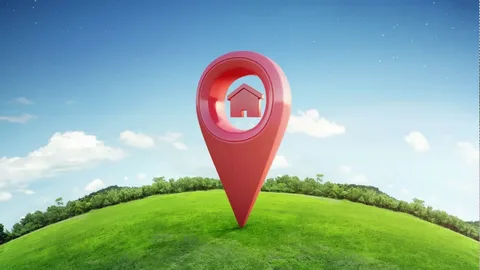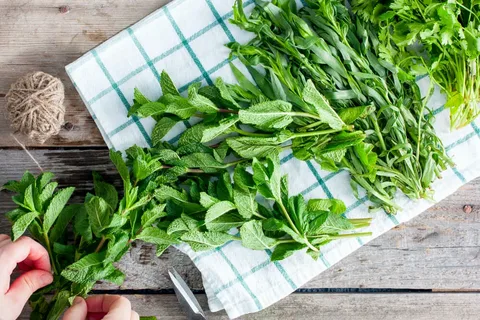How to Start a Home Herb Garden (Even in Small Spaces!)
Herb gardening is a rewarding and practical hobby that anyone can enjoy, regardless of their space or gardening experience. Fresh herbs can elevate the flavor of your meals, improve your health, and add a touch of greenery to your home. Whether you live in a small apartment or have a spacious backyard, starting a herb garden is easy, even if you don’t have much space. Here’s a simple guide to help you start your very own herb garden, even in the tiniest of spaces!
1. Choose the Right Herbs
The first step in starting your herb garden is to choose the right herbs. Some herbs grow well in small spaces, and others are more suited for larger gardens. Choose herbs that you’ll use often in your cooking, and consider how much light and space they need. Some great herbs for small spaces include:
- Basil: Needs full sunlight and is great for kitchen windowsills.
- Mint: A vigorous grower, mint can be kept in pots to prevent it from overtaking other plants.
- Thyme: A compact herb that does well in containers and small spaces.
- Parsley: Prefers partial sunlight and is perfect for small containers.
- Chives: Grow well in pots and can be harvested regularly.
2. Pick the Perfect Location

The location of your herb garden depends on the space available to you. Even in small apartments, there are plenty of ways to grow herbs.
- Windowsills: Ideal for herbs that need plenty of sunlight. A south-facing windowsill is perfect for herbs like basil and thyme.
- Balconies and Patios: If you have a small outdoor space, you can use containers, hanging baskets, or vertical garden systems to grow a variety of herbs.
- Indoor Shelves or Countertops: For those without outdoor space, indoor gardening is the way to go. Consider using shelves or small counters that receive enough sunlight.
- Vertical Gardens: If space is limited, consider using vertical gardening solutions like wall planters, hanging pots, or a vertical herb garden rack.
3. Select Containers and Planters
If you’re working with limited space, containers are an excellent solution. Choose pots with good drainage to prevent overwatering and root rot. You can also get creative by repurposing old containers like mason jars, teacups, or even wooden crates. Just be sure to ensure proper drainage by adding holes to the bottom of the containers.
Tips for containers:
- Use deep enough containers for herbs with longer roots like rosemary.
- Group smaller plants together to save space.
- Consider using self-watering planters for easier maintenance.
4. Use the Right Soil
Good soil is essential for a thriving herb garden. Choose a high-quality potting mix that drains well but retains enough moisture to keep your herbs hydrated. Avoid using regular garden soil, as it can be too heavy for containers and may not provide proper drainage.
You can also mix in a bit of sand or perlite to improve the soil’s drainage if needed. Organic compost can also be mixed in to give your herbs extra nutrients.
5. Ensure Proper Sunlight
Most herbs thrive in full sunlight, so place your garden in a location that receives at least 6 hours of sunlight each day. If growing indoors, you may need to supplement natural light with grow lights. Herbs like basil, thyme, and rosemary are sun-loving plants, while mint and parsley can tolerate partial shade.
If your space doesn’t receive enough sunlight, consider placing your herbs near a south-facing window or using artificial grow lights to mimic natural sunlight.
6. Watering and Maintenance
Proper watering is essential for healthy herb growth. Herbs grown in containers dry out more quickly than those planted in the ground, so check the soil moisture regularly. Water your herbs when the top inch of soil feels dry, but avoid overwatering, as it can lead to root rot.
- How to water properly: Water the base of the plants, not the leaves, to prevent mold growth. Ensure the water drains through the bottom of the container.
- Pruning and Harvesting: Regularly trim your herbs to encourage new growth. Use scissors or pruning shears to remove any dead or overgrown stems. Harvest herbs as needed, but don’t remove more than one-third of the plant at a time.
7. Fertilizing Your Herbs
Herbs in containers will need occasional feeding to keep them healthy. Use an organic liquid fertilizer every 3 to 4 weeks to provide the necessary nutrients. Avoid over-fertilizing, as this can lead to weak growth or loss of flavor.
If you want to avoid synthetic fertilizers, consider using compost or organic slow-release pellets to nourish your herbs naturally.
8. Dealing with Pests
While herbs are generally low-maintenance, they can attract pests like aphids, spider mites, or whiteflies. If you notice pests on your plants, remove them by hand or wash the leaves with a gentle stream of water. You can also use organic pest repellents, such as neem oil, or make your own insecticidal soap.
9. Enjoy Your Fresh Herbs!

The best part of having a home herb garden is enjoying the fruits of your labor! Use your fresh herbs to elevate your meals, make herbal teas, or create homemade remedies. Fresh herbs add a burst of flavor to everything from salads and soups to sauces and desserts.
Final Thoughts
Starting a home herb garden, even in small spaces, is a rewarding and sustainable way to add fresh ingredients to your cooking. With a little effort and the right tools, you can grow a variety of herbs right in your kitchen or on your balcony. So, whether you’re a seasoned gardener or a beginner, there’s no better time than now to start your own herb garde
